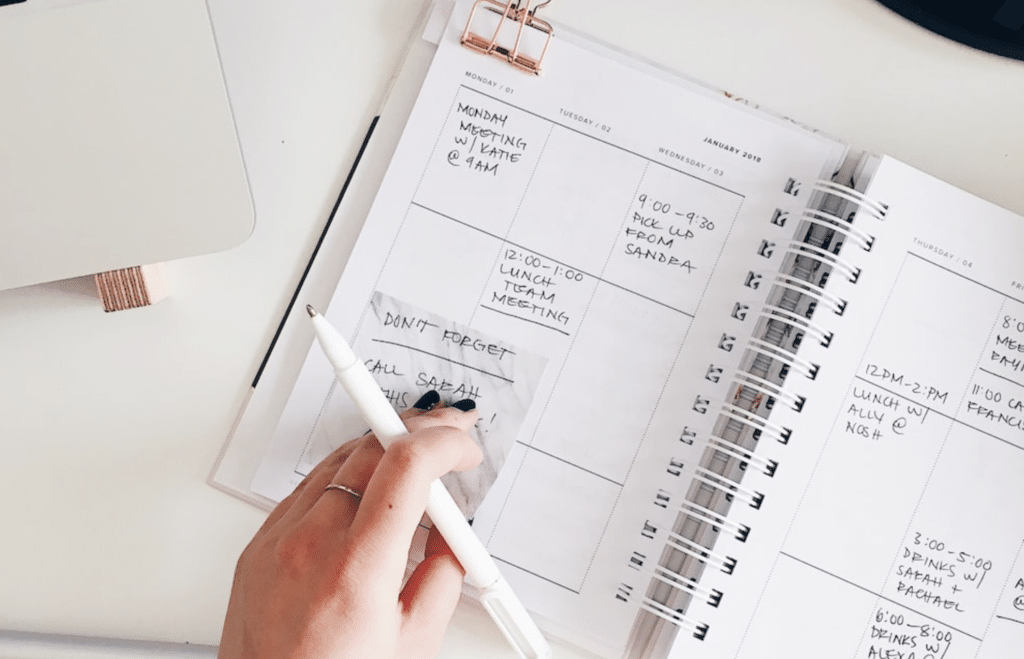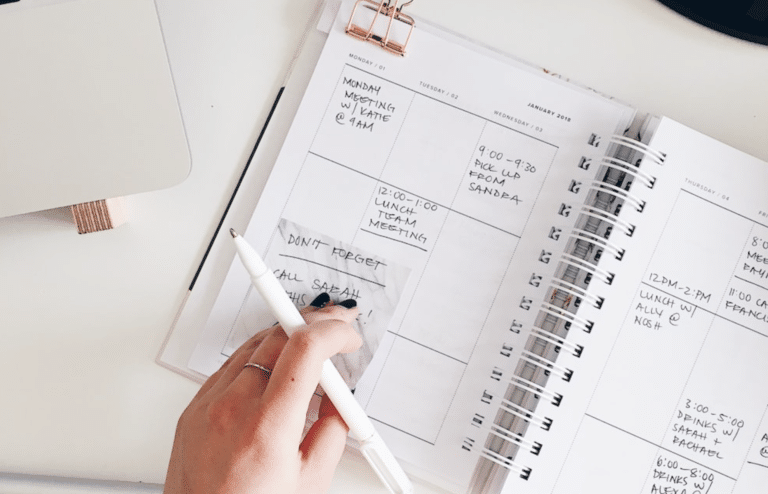
Image Source: Unsplash
Introduction
In today’s fast-paced world, staying organized is essential for maintaining productivity and achieving personal and professional goals. While traditional paper planners have been a popular choice for many, digital planners offer a more flexible and efficient way to manage your life. In this article, we’ll explore the benefits of digital planning and provide a comprehensive guide on how to organize your life using a digital planner.
Benefits of Digital Planning
Digital planning offers numerous advantages over traditional paper planners. Here are some key benefits:
- Flexibility: With a customizable digital planner, you have the freedom to customize layouts, add-ons, and decorations to suit your personal preferences. You can easily rearrange, delete, or duplicate items with just a few taps, eliminating the need for messy erasers or correction tape.
- Accessibility: Digital planners can be accessed from multiple devices, such as your iPad, phone, or laptop. This allows you to stay organized on the go and easily sync your planner across devices.
- Efficiency: Digital planners offer features like search functionality, automatic backups, and the ability to copy and paste information. These features help save time and streamline your planning process.
- Environmental Friendliness: By going digital, you reduce paper waste and contribute to a greener environment.
- Versatility: Digital planners can be used for various purposes, such as organizing your schedule, tracking goals, managing projects, and even journaling.
Choosing the Right Digital Planner App
When it comes to digital planning, choosing the right app is crucial. There are several options available, but two popular choices are GoodNotes and Notability.
However, for the purpose of this article, we will focus on GoodNotes, a powerful app that works seamlessly on the iPad.
Getting Started with GoodNotes on iPad
Setting Up Your Digital Planner
To begin using GoodNotes, you’ll need an iPad and the GoodNotes 5 app, which can be purchased from the App Store. Once installed, you can start setting up your digital planner.
- Create a New Notebook: Open GoodNotes and create a new notebook for your digital planner.
- Customize Cover and Paper: Personalize your digital planner by choosing a cover design and selecting the type of paper you prefer, such as lined, dotted, or blank.
- Import Templates: GoodNotes allows you to import pre-designed templates or create your own. Browse online marketplaces like Etsy or create templates using apps like Keynote or Canva.
- Organize Pages: Arrange your pages in a logical order, such as monthly spreads, weekly spreads, and daily spreads.
Customizing Your Planner
Once you have set up your digital planner, you can start customizing it to suit your needs and preferences.
- Color Schemes: Choose a color scheme that resonates with you. Experiment with different colors for text, backgrounds, and highlights.
- Fonts and Text Styles: GoodNotes offers a variety of fonts and text styles to choose from. Select fonts that are easy to read and reflect your personal style.
- Add-ons and Widgets: Enhance your digital planner with add-ons like task checklists, habit trackers, and weather widgets. These can help you stay organized and motivated.
- Digital Stickers and Decorations: GoodNotes allows you to add digital stickers, doodles, and decorations to your planner. This adds a personal touch and makes planning more enjoyable.
Creating Templates and Spreads
GoodNotes enables you to create templates and spreads that suit your specific planning needs. Here are some ideas for different types of spreads you can incorporate into your all in one digital planner:
- Monthly Spreads: Use a monthly spread to visualize your schedule, important events, and deadlines for the entire month. You can create this spread using Keynote or import ready-made templates.
- Weekly Spreads: Plan your week ahead by creating a weekly spread that includes sections for tasks, appointments, and goals. Add a habit tracker to monitor your progress.
- Daily Spreads: Daily spreads allow you to plan your day in detail. Include sections for your to-do list, schedule, meal planning, and even self-care activities.
- Goal Trackers: Use goal trackers to monitor your progress on specific goals, whether they are related to fitness, personal development, or career milestones.
- Habit Trackers: Keep track of your habits and establish new ones by using habit trackers. This visual representation of your habits can help you stay accountable and motivated.
Harnessing the Power of Google Sheets
While GoodNotes is excellent for visual planning, Google Sheets can be a valuable tool for tracking and organizing data. Here are some ways you can use Google Sheets in conjunction with your digital planner:
Tracking Your Book Collection
If you’re an avid reader, keeping track of your book collection can be challenging. Google Sheets offers a simple and efficient solution for organizing your books. Create a spreadsheet with columns for the book title, author, genre, and status (read, unread, or in progress).
You can even add additional columns for ratings and personal notes about each book.
Managing Blog Statistics
For bloggers, tracking blog statistics is essential for measuring growth and identifying areas for improvement. Google Sheets can help you create visually appealing charts and graphs to track metrics such as page views, subscribers, and post frequency. You can also track your social media followers and engagement.
Creating a Monthly Budget
Maintaining a monthly budget is crucial for financial stability. Google Sheets provides customizable budget templates that allow you to track your income, expenses, savings, and investments. Utilize formulas to automate calculations and visualize your spending patterns through charts.
Streamlining Your Life with Notion
Notion is a versatile app that can be used for a wide range of purposes, from note-taking to project management. Here’s how you can utilize Notion to streamline your life:
Setting Up a Blog Dashboard
Notion’s flexibility makes it ideal for creating a blog dashboard. You can create pages for content calendars, blog post ideas, SEO optimization, and collaboration with guest writers. Utilize templates or design your own layouts to suit your blogging needs.
Creating Content Calendars
Digital Content calendars are essential for planning and organizing your blog posts. Notion allows you to create a calendar view, where you can schedule and assign deadlines for your posts. Additionally, you can create kanban board views to track the progress of each blog post.
Tracking Writing Projects
If you’re a writer, Notion can be your go-to tool for tracking writing projects. Create pages for each writing project and use them to store research, notes, and ideas. Utilize databases to keep track of potential content partners, pitching events, and submission deadlines.
Tips and Tricks for Effective Digital Planning
To make the most of your digital planner, here are some tips and tricks to consider:
- Syncing Your Devices: Ensure that your digital planner is synced across all your devices, allowing you to access and update it anytime, anywhere.
- Utilizing Templates and Add-ons: Take advantage of pre-designed templates and add-ons available online. These can save you time and enhance your planning experience.
- Incorporating Digital Doodles and Decorations: Add a personal touch to your digital planner by incorporating digital doodles, stickers, and decorations. This can make planning more enjoyable and visually appealing.
Staying Organized on the Go
One of the benefits of digital planning is the ability to stay organized even when you’re on the go. Here are some ways to ensure you can access your planner from anywhere:
- Using Mobile Apps for Digital Planning: Install mobile apps on your phone or tablet that are compatible with your digital planning app. This way, you can access your digital planner for iPad even if you don’t have your iPad with you.
- Accessing Your Planner from Anywhere: Utilize cloud storage or syncing services like Dropbox or iCloud to ensure your digital planner is accessible from any device with an internet connection.
Overcoming Challenges and Staying Motivated
Digital planning can come with its own set of challenges. Here are some tips to overcome these challenges and stay motivated:
- Dealing with Distractions: Set boundaries and create designated times for digital planning to minimize distractions. Turn off notifications on your devices and find a quiet space where you can focus.
- Establishing a Routine: Make digital planning a regular part of your daily or weekly routine. Consistency is key to staying organized and maintaining productivity.
- Celebrating Achievements: Reward yourself for achieving your goals or completing tasks. This can help you stay motivated and develop a positive mindset towards digital planning.
Conclusion
Digital planning offers a modern and efficient way to organize your life and boost productivity. By utilizing apps like GoodNotes, Google Sheets, and Notion, you can customize your planner, track important data, and streamline your daily tasks.
Remember to experiment with different layouts, add-ons, and decorations to create a planner that reflects your personal style and motivates you to achieve your goals. Embrace the power of digital planning and unlock your full potential for success.




